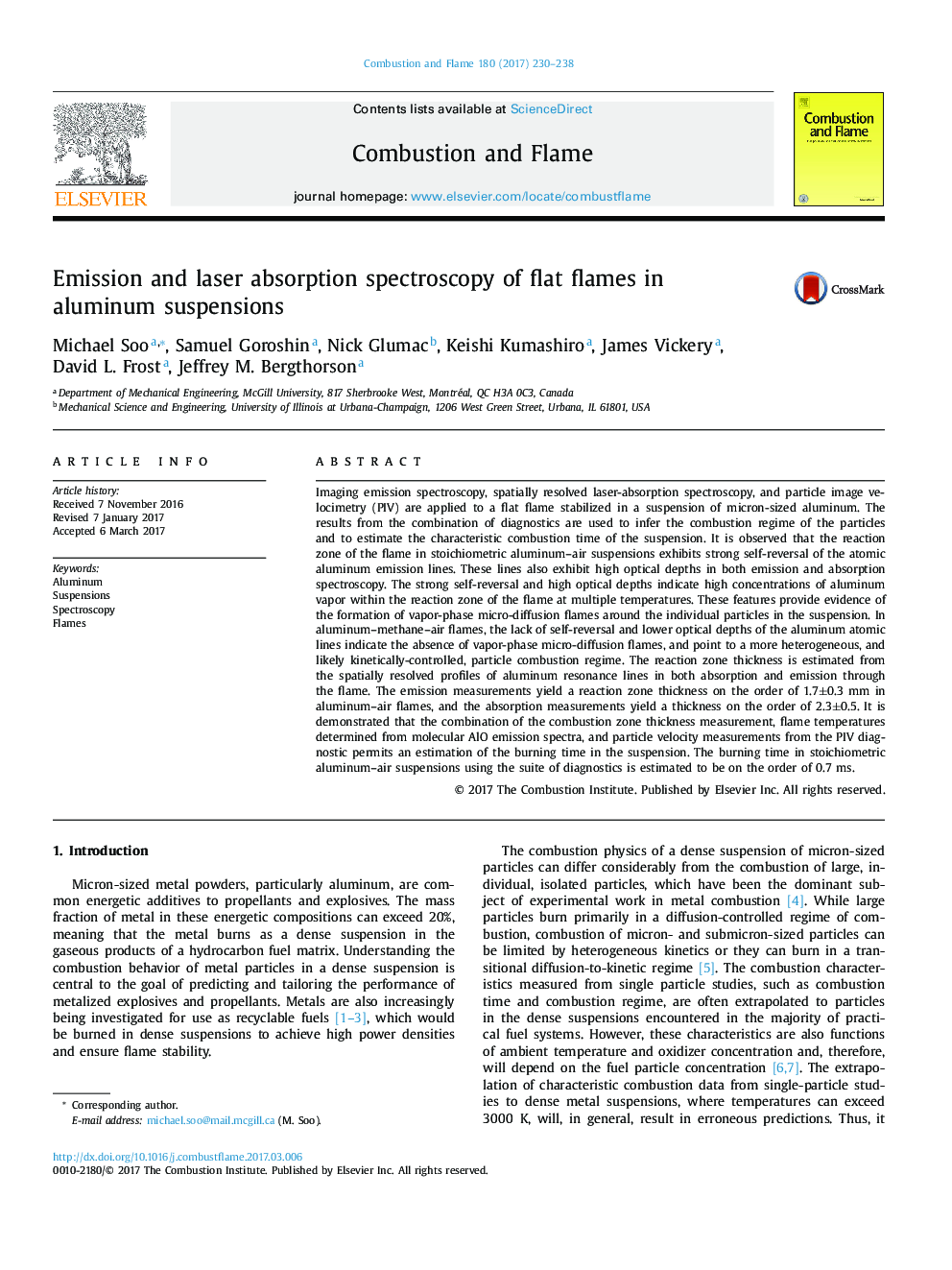| کد مقاله | کد نشریه | سال انتشار | مقاله انگلیسی | نسخه تمام متن |
|---|---|---|---|---|
| 4764391 | 1423557 | 2017 | 9 صفحه PDF | دانلود رایگان |
عنوان انگلیسی مقاله ISI
Emission and laser absorption spectroscopy of flat flames in aluminum suspensions
ترجمه فارسی عنوان
طیف سنجی جذب اشعه و لیزر شعله های مسطح در سوسپانسیون های آلومینیومی
دانلود مقاله + سفارش ترجمه
دانلود مقاله ISI انگلیسی
رایگان برای ایرانیان
کلمات کلیدی
آلومینیوم، سیستم های تعلیق، طیف سنجی، شعله های آتش،
موضوعات مرتبط
مهندسی و علوم پایه
مهندسی شیمی
مهندسی شیمی (عمومی)
چکیده انگلیسی
Imaging emission spectroscopy, spatially resolved laser-absorption spectroscopy, and particle image velocimetry (PIV) are applied to a flat flame stabilized in a suspension of micron-sized aluminum. The results from the combination of diagnostics are used to infer the combustion regime of the particles and to estimate the characteristic combustion time of the suspension. It is observed that the reaction zone of the flame in stoichiometric aluminum-air suspensions exhibits strong self-reversal of the atomic aluminum emission lines. These lines also exhibit high optical depths in both emission and absorption spectroscopy. The strong self-reversal and high optical depths indicate high concentrations of aluminum vapor within the reaction zone of the flame at multiple temperatures. These features provide evidence of the formation of vapor-phase micro-diffusion flames around the individual particles in the suspension. In aluminum-methane-air flames, the lack of self-reversal and lower optical depths of the aluminum atomic lines indicate the absence of vapor-phase micro-diffusion flames, and point to a more heterogeneous, and likely kinetically-controlled, particle combustion regime. The reaction zone thickness is estimated from the spatially resolved profiles of aluminum resonance lines in both absorption and emission through the flame. The emission measurements yield a reaction zone thickness on the order of 1.7±0.3 mm in aluminum-air flames, and the absorption measurements yield a thickness on the order of 2.3±0.5. It is demonstrated that the combination of the combustion zone thickness measurement, flame temperatures determined from molecular AlO emission spectra, and particle velocity measurements from the PIV diagnostic permits an estimation of the burning time in the suspension. The burning time in stoichiometric aluminum-air suspensions using the suite of diagnostics is estimated to be on the order of 0.7 ms.
ناشر
Database: Elsevier - ScienceDirect (ساینس دایرکت)
Journal: Combustion and Flame - Volume 180, June 2017, Pages 230-238
Journal: Combustion and Flame - Volume 180, June 2017, Pages 230-238
نویسندگان
Michael Soo, Samuel Goroshin, Nick Glumac, Keishi Kumashiro, James Vickery, David L. Frost, Jeffrey M. Bergthorson,
